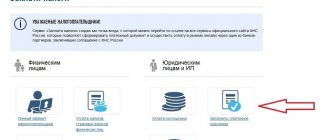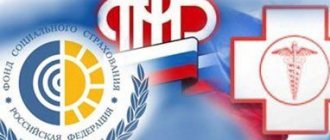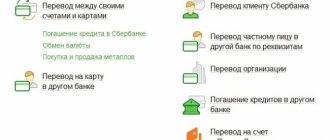The concept of additional insurance premiums
DSV are contributions transferred to the Pension Fund of the Russian Federation in addition to standard transfers to the funded part of the pension. They can be transferred both at the initiative of the employee and the employer. Let's consider both options in more detail.
- At the request of the employee. He submits an application that he wants to make contributions from his salary to the funded part of the pension;
- By law, the employer. If an employee works in difficult conditions and harmful to health, then additional deductions are made for him. As a rule, management deliberately includes this amount in wages.
In the first option, the employee must draw up a unified statement indicating the exact amount of the transfer on a monthly basis.
Healthy! If you want to make additional contributions to the funded part of your pension, it is best to submit an application through your employer, so you can immediately inform him of your initiative. It is permissible to submit the form directly to the Pension Fund or MFC, but you will need to notify the company management of your desire.
Additional insurance contributions for funded pension: what is it?
An additional insurance contribution for a funded pension (DSV) is an individual payment that is paid at the expense of the citizen himself and is included in his pension savings (Article 4, Article 5 of Law No. 56-FZ of April 30, 2008). At the expense of DSV, the amounts of the funded pension are formed, which a person receives in the manner determined by the Law “On Funded Pension” dated December 28, 2013 No. 424-FZ.
To begin transferring additional insurance contributions to the funded part of the pension, a person submits an application to the Pension Fund, entering into a special legal relationship with the Fund (Clause 1, Article 3 of Law No. 56-FZ). You can pay contributions directly or through your employer. In general, contributions are paid entirely at the expense of the citizen himself. But the employer can pay them at his own expense - such a decision is formalized by a separate order or provided for by the provisions of the employment contract (clause 2 of article 5, clause 1 of article 8 of law No. 56-FZ).
The amount of DSV is not limited. Payers independently determine the amount of such deductions. In accordance with the established procedure, contributions can be used by the Pension Fund for investment, due to which they are increased (Clause 2, Article 3, Articles 10, 11 of Law No. 56-FZ). The insured person can choose management companies (investment portfolio) in relation to pension savings; they can be transferred to a NPF (non-state pension fund). In the manner regulated by Art. -15 of Law No. 56-FZ, state co-financing of pensions is carried out (we will consider its features further).
It is important not to confuse additional insurance pension contributions, regulated by Law No. 56-FZ, and the following pension formation schemes:
1. Direct interaction of a citizen with a non-state pension fund for the formation of a non-state pension, which is regulated by the Law on Non-State Pension Funds dated 05/07/1998 No. 75-FZ. At the same time, “investment” deductions under Law No. 56-FZ can be part of the program of interaction between a citizen and a non-state pension fund. Each additional insurance contribution to the pension in the funded part also forms pension savings (Article Law No. 75-FZ).
2. Conclusion of an agreement with the Pension Fund for voluntary “pension” insurance, in accordance with Art. Law “On Compulsory Pension Insurance” dated December 15, 2001 No. 167-FZ. We are talking about the length of service at which a person has the right to receive a regular old-age insurance pension (65 or 60 years, respectively, for men and women after the completion of the 2020 reform). If the insurance period is not enough, up to 50% of the required amount can be “purchased”. And this scheme, in principle, has nothing to do with DSA, since it is not related to the funded part of the pension as such.
Paying DSA has quite a few advantages. Let's consider them further.
Basic provisions
Modern pension legislation indicates that all citizens form the insurance part of their old-age benefits.
Employers make contributions for hired employees, and self-employed citizens make contributions themselves. As for the funded part of the pension, its formation is voluntary and can occur either at the initiative of the employee or as necessary by the employer. In particular, additional insurance premiums for work hazards are automatically transferred to the funded part.
Good to know! Transfers for additional insurance contributions can be made to both the state and private Pension Funds. When transferring from one to another, savings are preserved.
Who can pay additional contributions
Additional contributions to the funded part of the pension are voluntary contributions from the citizen. They are included in pension savings and can be taken into account at the choice of a citizen when determining the size of a funded pension or the size of a fixed-term pension payment.
These contributions are paid by the citizen at his own expense and are voluntary. They may be paid in addition to mandatory pension insurance contributions or other voluntary pension contributions.
It should be separately noted that additional contributions to the funded part of the pension can be paid not only by persons participating in the compulsory pension insurance system, but also by persons who are not subject to pension insurance, including those who do not carry out any activity at all or who are undergoing military service or service in law enforcement agencies .
Paid, that is, received voluntary insurance contributions to the Pension Fund of the Russian Federation, are included in the citizen’s pension savings, reflected in a special part of the individual personal account.
Additional insurance premiums can be paid by anyone, including pensioners.
Types of activities providing for DSA
Transfer of additional insurance premiums is made to persons applying for early retirement. This is done so that by the time of retirement the state has sufficient funds. In most cases, we are talking about harmful and difficult working conditions. Let's look at the list of professions and labor characteristics that require DSA:
- underground work and activities in hot shops;
- difficult working conditions;
- participation in locomotive crews;
- geological excavations and expeditions;
- work with persons in prison.
Women typists and employees of the textile industry are included in a special category. A complete list of professions can be found in Federal Law No. 400 of 2013.
Attention! Transport drivers working in mines and mines are treated as ordinary employees. That is, they also have the right to early retirement and special additional payments.
Federal Law of December 28, 2013 No. 400-FZ “On Insurance Pensions”
Read also: How and who makes laws in the Russian Federation
Who pays additional fees?
Not everyone needs to pay insurance premiums according to additional tariffs. They are accrued only for payments to employees employed:
- in underground work, in work with hazardous working conditions and in hot shops (subclause 1, part 1, article 30 of the Federal Law of December 28, 2013 No. 400-FZ “On Insurance Pensions”);
- on special types of work listed in subparagraphs 2–18 of part 1 of article 30 of the Federal Law of December 28, 2013 No. 400-FZ.
Decree of the Government of the Russian Federation dated July 16, 2014 No. 665 established lists of specific works (industry, professions, positions, specialties, organizations) that are used for the early assignment of an old-age insurance pension, and in respect of which it is necessary to accrue insurance contributions to the pension fund at additional rates .
Such employees have the right to early assignment of an insurance pension. That is, an additional rate is added to the basic rate, and the total rate is higher than for “regular” employees.
Regulatory regulation
The basic law governing the assignment and transfer of additional insurance premiums is Federal Law No. of 2008 . The act states that additional transfers can be initiated by both the employee and the employer, and from a tax and reporting point of view, these are completely different procedures, although they pursue the same goal.
Federal Law No. 56 of April 30, 2008 “On additional insurance contributions for funded pensions and state support for the formation of pension savings”
Personnel accounting and payroll calculation in 1C 8.3 ZUP 3.1
Hello dear visitors of zup1c. Today in the next article we will talk about how to set up the calculation of insurance premiums for additional tariffs in the 1C ZUP 3.1(3.0) . I will talk in detail about where and how this information is specified under various program parameters, and also, using a specific example, we will look at how contributions for additional tariffs are calculated, and how these contributions are reflected in the regulated RSV-1 report.
Formation
In 2020, contributions to the funded part of the pension are optional, that is, a person has the right to send all funds to the insurance fund. Along with this, there are several ways to form a funded pension. These include:
- Transfer of additional insurance contributions at the initiative of the employee or the employer;
- Participation in state pension co-financing programs;
- Transfer of funds from maternity capital is acceptable for mothers of two children born after 2007.
Despite the fact that many citizens do not see the point in a funded pension, it can be used wisely to increase the amount in the account. To do this, you should choose a reliable but profitable fund.
Good to know! In case of early transfer from one non-state fund to another, the earned interest is lost, but the base amount is retained in its base form. Once every five years, it is permissible to change organizations without losing what you have accumulated.
Maximum and minimum amounts
The formation of the funded part of a pension is an ambiguous process, since it is important to take into account a number of nuances.
Firstly, in order to receive your savings upon retirement, you need their amount to be at least 5% of the insurance amount. Secondly, there are no restrictions on the amounts received by the fund towards the funded pension. If non-state funds establish their own programs for stimulating and increasing deposits, then the government department doubles contributions if the amount of funds received is at least two thousand. Note that the maximum doubling offered by the Pension Fund is twelve thousand rubles.
It is important to know! The program for doubling contributions conducted by the Pension Fund takes into account only contributions made personally by a citizen. Transfers from the employer are not taken into account.
Tariffs of additional insurance premiums
The DSA interest rate is determined in accordance with the working conditions of citizens. Thus, an expert assessment of the harmfulness and severity of the place of duty is necessary. Let us note that in accordance with Federal Law No. 426 on working conditions, if deficiencies have been identified, then before the next inspection the employer is obliged to do everything possible to eliminate them.
The percentage of wages transferred as an additional insurance premium depends on the degree of harmfulness and severity of working conditions. Let's look at the indicators in the table.
| Working conditions | Grade | Contribution amount, % |
| dangerous | 4 | 8 |
| harmful | 3,4 | 7 |
| harmful | 3,3 | 6 |
| harmful | 3,2 | 4 |
| harmful | 3,1 | 2 |
| acceptable | 2 | |
| optimal | 1 |
Based on the table, we can conclude that if, as a result of an audit, an enterprise is assigned an acceptable or optimal level of working conditions, then there is no need to transfer additional insurance premiums.
Good to know! An inspection of working conditions is carried out by the authorized body at least once every five years, but at the request of employees it can be initiated ahead of schedule.
Federal Law of December 28, 2013 N 426-FZ “On special assessment of working conditions”
Read also: Mortgage holidays
Additional tariffs for insurance contributions to the Pension Fund
Article 58.3 of Federal Law 212-FZ determined that until a special assessment of working conditions is carried out, additional tariffs for contributions to the Pension Fund are established.
Now the Federal Tax Service is in charge of calculating insurance premiums (including control over their accrual and payment).
Law 212-FZ, mentioned in this article, became invalid as of 01/01/2017 on the basis of Law No. 250-FZ of 07/03/2016.
ATTENTION! In order to preserve information about the previous practice of charging additional insurance premiums, we are keeping this article current at the time the law was in effect.
Additional rates for contributions to the Pension Fund:
For persons employed in the types of work specified in paragraph 1 of part 1 of Article 30 of Federal Law No. 400-FZ, the following additional tariffs for insurance contributions to the Pension Fund are established
Types of work specified in paragraph 1 of part 1 of article 30 of Federal Law No. 400-FZ:
| Underground work, work with hazardous working conditions and in hot shops (List No. 1 of production, work, professions, positions and indicators in underground work, work with especially harmful and especially difficult working conditions, approved by resolution of the Cabinet of Ministers of the USSR of January 26, 1991 .N 10) |
| Period | Additional insurance premium rate |
| year 2013 | 4,0% |
| year 2014 | 6,0% |
| 2015 | 9,0% |
| 2016 | 9,0% |
| 2017 and subsequent years | 9,0% |
For persons employed in the types of work specified in paragraphs 2 - 18 of part 1 of Article 30 of Federal Law No. 400-FZ, the following additional tariffs for insurance contributions to the Pension Fund are established
Types of work specified in paragraphs 2-18 of part 1 of article 30 of Federal Law No. 400-FZ:
| Work with difficult working conditions (List No. 2 of industries, works, professions, positions and indicators with harmful and difficult working conditions, approved by Resolution of the Cabinet of Ministers of the USSR of January 26, 1991 No. 10) |
| Women working as tractor drivers in agriculture and other sectors of the economy, drivers of construction, road and loading and unloading machines |
| Work in the textile industry with increased intensity and severity |
| Workers of locomotive crews and workers of certain categories who directly organize transportation and ensure traffic safety on railway transport and the subway, as well as as truck drivers directly in the technological process in mines, open-pit mines, mines or ore quarries for the removal of coal, shale, ore , breeds |
| Field geological exploration, prospecting, topographic and geodetic, geophysical, hydrographic, hydrological, forest management and survey work |
| Workers, foremen (including senior workers) directly at logging and timber rafting sites, including maintenance of mechanisms and equipment |
| Machine operators (docker-mechanizers) during loading and unloading operations in ports |
| Work as a crew member on ships of the sea, river fleet and fishing industry fleet (with the exception of port ships constantly operating in the port water area, service and auxiliary ships and crew ships, suburban and intracity transport ships) |
| Drivers of buses, trolleybuses, trams on regular city passenger routes |
| Persons directly employed full-time in underground and open-pit mining (including mine rescue personnel) in the extraction of coal, shale, ore and other minerals and in the construction of mines and mines |
| Work on the extraction, processing of fish and seafood, acceptance of finished products in the fishery (regardless of the nature of the work performed) on vessels of the marine fleet of the fishing industry, as well as on certain types of vessels of the sea, river fleet and fishing industry fleet |
| Civil aviation flight personnel |
| Work on direct flight control of civil aviation aircraft |
| Engineering and technical staff performing direct maintenance of civil aviation aircraft |
| Rescuers of professional emergency rescue services, professional emergency rescue teams |
| Work with convicts as workers and employees of institutions executing criminal penalties in the form of imprisonment |
| Work in the state fire service (fire protection, fire fighting and emergency rescue services) |
| Period | Additional insurance premium rate |
| year 2013 | 2,0% |
| year 2014 | 4,0% |
| 2015 | 6,0% |
| 2016 | 6,0% |
| 2017 and subsequent years | 6,0% |
These categories of workers employed in such types of work have the right to early assignment of an insurance pension.
Contributions transferred by employers to the Pension Fund at additional rates for work in harmful and dangerous working conditions are not taken into account when forming the maximum base for calculating insurance contributions for compulsory pension insurance.
The base for calculating insurance premiums to the Pension Fund of the Russian Federation is determined in accordance with paragraph 5.1 of Article 8 of Federal Law 212-FZ, and its amount is established annually by the government of the Russian Federation.
Thus, summarizing all available data, we obtain a summary table of additional contributions to the Pension Fund before a special assessment of working conditions is carried out in the organization:
| Type of work | Additional tariff for the insurance part of the pension | ||
| year 2013 | year 2014 | 2015, 2020, 2020 and following years | |
| clause 1 part 1 art. 30 No. 400-FZ | 4% | 6% | 9% |
| clause 2-18, part 1, art. 30 No. 400-FZ | 2% | 4% | 6% |
If your organization has not yet carried out a special assessment of working conditions and the results of certification of workplaces are valid, on the grounds determined by Federal Law No. 426-FZ - no later than December 31, 2020 inclusive, then when determining the amount of additional insurance premium rates for employees, having the right to early assignment of an insurance pension, the results of the automated work procedure are used, according to the results of which the working conditions of such employees are recognized as harmful or dangerous. This provision is enshrined in Part 5 of Article 15 of Federal Law No. 421-FZ. If the working conditions, based on the results of the AWP, at such workplaces were considered optimal or acceptable, then the employer is not exempt from paying insurance premiums at additional rates and also pays insurance premiums in the amounts established by paragraphs 1 and 2 of Article 58.3 of Federal Law No. 212-FZ, – 9 and 6% respectively.
It should be noted that clause 2.1 of Article 58.3 of Federal Law No. 212-FZ establishes the possibility of exempting the employer from paying additional contributions at workplaces with acceptable or optimal working conditions. Such a right may be granted based on the results of a special assessment of working conditions.
Having created conditions at your workplaces that meet labor safety requirements and carried out special labor safety measures at such workplaces, the amounts of additional tariffs for you will be established by part 2.1 of Article 58.3 of Federal Law No. 212-FZ.
| Class of working conditions | Class / Subclass of working conditions | Additional insurance premium rate |
| Optimal | 1 | 0,0% |
| Acceptable | 2 | 0,0% |
| Harmful | 3.1 | 2,0% |
| 3.2 | 4,0% | |
| 3.3 | 6,0% | |
| 3.4 | 7,0% | |
| Dangerous | 4 | 8,0% |
From this table, we see that having created the safest working conditions in their workplaces and confirmed this with the results of a special assessment of working conditions, the lower the percentage of insurance contributions the employer will pay to the Pension Fund.
In accordance with the Federal Law of December 17, 2001 No. 173-FZ “On Labor Pensions in the Russian Federation,” an additional tariff for insurance contributions to the Pension Fund has been introduced for employers who have workplaces with harmful and (or) dangerous working conditions.
Additional tariffs for insurance contributions are paid by employers in accordance with the requirements of Article 58.3 of the Federal Law of July 24, 2009 No. 212-FZ “On Insurance Contributions to the Pension Fund of the Russian Federation, the Social Insurance Fund of the Russian Federation, the Federal Compulsory Medical Insurance Fund.”
The zero tariff for additional contributions under acceptable and optimal working conditions can only be applied after the special labor assessment has been carried out.
Procedure and deadlines
Additional insurance contributions are transferred to the Pension Fund simultaneously with standard transfers to the insurance pension. The law establishes that funds must be sent before the middle of the month following the billing period. Note that if the initiator of the DSA is an employee, then the employer indicates a different budget classification code for this transfer, although he makes it himself.
If a company has employees for whom it is necessary to transfer ADS due to difficult or harmful working conditions, then a register of insured citizens must be drawn up once a quarter. Moreover, information is entered into it monthly, but information is provided for three periods at once.
The list of data entered into the document includes:
- information about the company as an insurer - details, tax identification number, number in the Pension Fund of Russia;
- certificate of payment order indicating the date, amount and basis for the transfer;
- the period for which the transfer was made;
- information about the employee - full name and individual personal account number in the pension system;
- transfer amount.
The deadline for submitting DSV-3 - reporting forms from the register - is no later than the twentieth day of the new quarter.
Example of filling out the DSV-3 form
It is important to know! Proof of work in dangerous and harmful conditions is precisely the transfer of additional insurance contributions, so an employee applying for early retirement should check whether the employer complies with the law.
Contributions above the minimum wage are taxed at reduced rates
Small and medium-sized businesses from April 1 to December 31, 2020 calculate insurance premiums in a special manner (Article 6 of Federal Law No. 102-FZ dated April 1, 2020).
Every month you need to look at whether payments in favor of an individual exceed the minimum wage established at the beginning of the billing period. If they exceed, then reduced insurance premium rates are applied to part of the amount above the minimum wage according to the following scheme:
| Contributions | Bid |
| For compulsory pension insurance | And up to the maximum value of the base (1,292,000 rubles), and above - 10% |
| For compulsory social insurance in case of temporary disability and in connection with maternity | 0 % |
| For compulsory health insurance | 5 % |
When calculating insurance premiums, these payers must indicate that they apply a reduced rate. To do this, in Appendices 1 and 2 to Section 1 they must enter the tariff code “20”, and in Section 3 apply the category codes of the insured person: MS, VZHMS, VPMS (letter of the Federal Tax Service dated 04/07/2020 No. BS-4-11/ [email protected] ).
Who pays additional contributions to the Pension Fund?
It is impossible to unequivocally answer the question of who finances pension contributions, both basic and additional, since everything depends on the point of view.
On the one hand, all transfers are made by the employer from the payroll fund. On the other hand, everyone understands that when determining wages for employees, management calculates in advance the amount of transfers to the tax and pension fund and sets the calculation based on this. Thus, on the one hand, deductions are made by the employer, on the other hand, this is the unpaid part of the salary that the manager would be willing to pay, but is obliged to transfer to the Pension Fund and the Social Insurance Fund. The situation when additional contributions are made on the initiative of the employee deserves special attention. In this case, the person manages his net income, that is, after taxes are deducted, and the employer only acts as an intermediary in the transfer.
I make additional contributions to the funded part of my pension
Deductions can be obtained for contributions:
- under non-state pension agreements with non-state pension funds;
- under voluntary pension insurance agreements with insurance organizations;
- under voluntary life insurance contracts, if such contracts are concluded for a period of at least five years.
You can enter into such agreements and pay contributions under them not only for your own benefit, but also for the benefit of your spouse, parents (including adoptive parents), and disabled children (including those adopted or under guardianship (trusteeship)).
The procedure for providing a social tax deduction for expenses on non-state pension provision and voluntary pension insurance and voluntary life insurance is determined by clause 4 of Art. 219 of the Tax Code of the Russian Federation. The maximum amount of paid pension (insurance) contributions from which a tax deduction will be calculated is 120,000 rubles (together with other expenses related to treatment, training, etc.).
To receive a deduction for the costs of paying pension (insurance) contributions, the taxpayer must:
1 Fill out a tax return (form 3-NDFL) at the end of the year in which the contributions were paid.
2 Obtain a certificate from the accounting department at the place of work about the amounts of accrued and withheld taxes for the corresponding year in form 2-NDFL.
3 Prepare a copy of the agreement (insurance policy) with a non-state fund (insurance company).
4 Prepare copies of documents confirming the degree of relationship with the person for whom the taxpayer paid pension (insurance) contributions.
- marriage certificate, if the taxpayer paid contributions for a spouse
- birth certificate (adoption documents) of the taxpayer, if the taxpayer paid contributions for his parents (adoptive parents)
- birth certificate of the child (documents establishing guardianship (trusteeship) or adoption), as well as a certificate confirming the child’s disability, if the taxpayer has paid contributions for his disabled child (including adopted or under guardianship (trusteeship))
5 Prepare copies of payment documents confirming the taxpayer’s actual expenses for paying contributions (cash register receipts, cash receipt orders, payment orders, etc.).
6* Submit to the tax authority at your place of residence a completed tax return with copies of documents confirming actual expenses and the right to receive a social tax deduction for expenses on paying pension (insurance) contributions.
If contributions under a non-state pension agreement (voluntary pension insurance/voluntary life insurance) were withheld by the employer from the taxpayer’s salary and transferred to the relevant pension funds (insurance companies), the deduction can be obtained before the end of the year by submitting a corresponding application directly to the employer.
Important note: When submitting copies of documents confirming the right to deduction to the tax authority, you must have their originals with you for verification by the tax inspector.
*If the submitted tax return has calculated the amount of tax to be refunded from the budget, together with the tax return, you can submit to the tax authority an application for a personal income tax refund in connection with the costs of paying pension (insurance) contributions.
How to get them back
If there are compelling reasons why a person does not want to keep funds in a certain non-state fund, then he has the right to withdraw them, losing interest.
Unreliability or finding a better offer can be used as an argument. To return, you must write an application and submit it to the current Pension Fund; the form indicates the details for transferring funds. The application is accompanied by documents reflecting the rights to the money and its management.
According to federal law, people who work in dangerous and difficult conditions receive a pension supplement. However, additional contributions are transferred to the funded part of the future payment. The transfer of DSV gives the right to early retirement. State and private programs for increasing funded pensions can bring good dividends; therefore, if the employer makes special contributions for difficult working conditions, then it is worth thinking about increasing the funded part of the pension.
Read also: Registration of price tags in 2020: legislative framework






